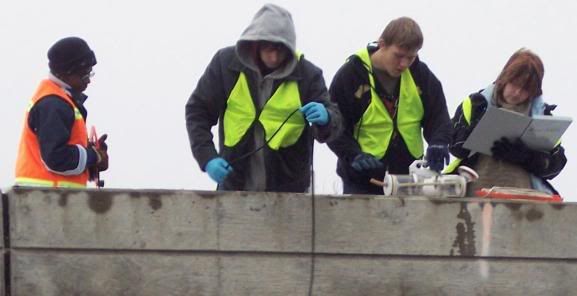The Bois de Sioux Watershed District (BdSWD) and the RRWMB provide equipment, funding, and training for the group, giving students the opportunity to carry out real-life scientific research. The students are gaining experience in instrument calibration, field data collection, quality assurance, data management, data analysis, and presentation skills. BdSWD supports the River Watch programs at Wheaton and Clinton-Graceville-Beardsley as well as Campbell, and Herman-Norcross has recently become involved. This makes the headwaters area of the Red River one of the more extensively monitored sections of the river.
Water clarity, measured with a transparency tube and turbidimeter, was good to excellent at the eight sites visited Wednesday. This indicated that relatively little sediment was being carried by the water at this time. Total maximum daily load (TMDL) for sediment is a concern downstream on the Red River, and it is encouraging to see these levels low.
The amount of oxygen dissolved in the water was fairly high, typically 13 to 14 milligrams of oxygen per liter of water. Oxygen levels must remain at or above 5 milligrams per liter of water year-round in order for animals and aquatic plants living in the water to survive. The oxygen levels are usually higher when the water is cooler, and the sample temperatures Wednesday ranged from 33 to 36 °F. In the summer, oxygen levels usually drop and can affect the survival of fish and aquatic plants.
Conductivity, the ability of the water to allow an electrical current to flow through it, provides a measurement of electrically-charged materials (ions) dissolved in the water. At several locations, the conductivity was noticeably higher that historic levels. This is an issue of interest in both water and soil management that the team will continue to investigate. At this point, the source of the additional dissolved materials is not clear, but the team hopes to be able to identify the types of materials and their sources.
This year, the team has been monitoring water quality on the Rabbit River and some of its tributaries since April, and will now spend time analyzing their data over the winter before resuming monitoring in the spring. The group is looking forward to participating in the International Water Conference in the spring.


